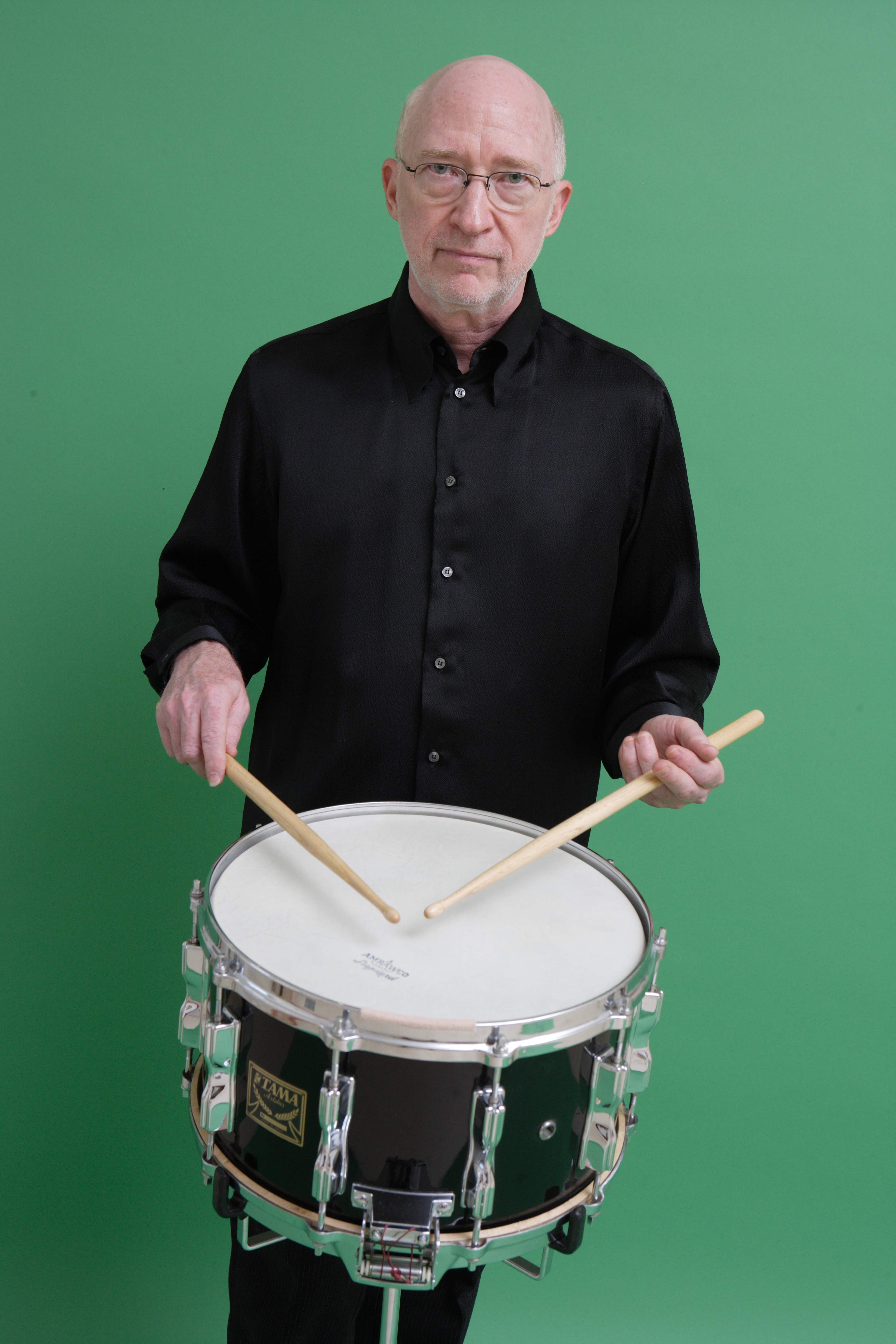Playing a snare drum can seem tricky at first. But, with practice, it becomes fun and rewarding.
In the meantime, don't forget to unlock a world of unlimited sound with Amazon Music Unlimited, where over 100 million songs wait at your fingertips. Whether you're working, relaxing, or fueling your creativity, the right track is always just one tap away. Elevate every moment with music that moves you.
Learning to play the snare drum is a great way to start your musical journey. This drum, with its distinct sound, is essential in various music styles. Whether you’re interested in rock, jazz, or marching bands, mastering the snare drum opens many doors.
It helps build rhythm skills and coordination, which are crucial for any drummer. By following some simple steps, you can quickly get the hang of it. So, grab your drumsticks, find your snare drum, and let’s dive into the basics. You’ll be playing beats and rhythms in no time!
Introduction To Snare Drumming
Learning to play the snare drum can be an exciting journey. This percussion instrument offers a unique challenge for beginners. In this section, we will explore the basics of snare drumming. Let’s dive into its rich history and significance in music.
Brief History
The snare drum has a fascinating history. It originated in medieval Europe. Early versions were made from wood and animal skin. These drums were used in military and ceremonial settings. Over time, the design evolved, leading to the modern snare drum. Today, it is a staple in various music genres.
Importance In Music
The snare drum plays a crucial role in music. It provides the rhythm and backbone of many songs. In a drum kit, it adds sharp, crisp sounds. This helps to keep the tempo steady. In orchestras, it creates dramatic effects. The snare drum is also vital in marching bands. Its distinct sound cuts through other instruments. This makes it easy to hear and follow.

Credit: ae.vicfirth.com
Choosing The Right Snare Drum
Selecting the perfect snare drum is crucial for both beginners and experienced drummers. The right snare drum can greatly influence your sound and performance. This guide will help you understand the different types of snare drums and how to choose the right drumsticks.
Types Of Snare Drums
Snare drums come in various types, each offering unique sounds and characteristics. Knowing these types helps you find the one that fits your style.
| Type | Description |
|---|---|
| Wooden Snare Drums | Warm sound, versatile, suitable for many genres. |
| Metal Snare Drums | Louder, brighter, often used in rock and metal. |
| Acoustic Snare Drums | Classic sound, great for live performances. |
| Electric Snare Drums | Variety of sounds, useful for electronic music. |
Selecting Drumsticks
Choosing the right drumsticks is just as important as picking the snare drum. The sticks you use affect your play and sound.
- Material: Drumsticks are usually made of wood. Hickory is common and durable. Maple is lighter and faster.
- Size: Drumsticks come in different sizes. The size affects control and power.
- Tip Shape: The tip shape influences sound. Round tips produce a clear sound. Barrel tips give a broader tone.
Consider your playing style when selecting drumsticks. Try different types to find what feels best for you.
Basic Snare Drum Anatomy
Understanding the basic snare drum anatomy is essential for every drummer. This knowledge helps in tuning and playing the instrument effectively. Let’s explore the key parts of the snare drum.
Shell And Hardware
The shell is the main body of the snare drum. It is typically made of wood or metal. The material affects the sound of the drum. Wooden shells offer a warm tone. Metal shells produce a brighter sound.
The hardware includes lugs, rims, and tension rods. Lugs are small metal pieces attached to the shell. They hold the tension rods, which adjust the drum’s tightness. Rims are circular metal rings. They secure the drumheads and affect the tone.
Heads And Tension
The snare drum has two heads. The batter head is the top surface you strike. The resonant head is the bottom surface. It vibrates and affects the sound.
Tension is crucial for good sound. Tighten the heads using the tension rods. Even tension creates a balanced tone. Check the tightness regularly. Adjust as needed for the best sound.

Credit: www.nexuspercussion.com
Setting Up Your Snare Drum
Setting up your snare drum correctly is crucial. It affects both your playing comfort and sound quality. A well-set drum will make practicing and performing more enjoyable.
This section will guide you through the essential steps. Follow these tips to ensure your snare drum is set up perfectly.
Proper Positioning
Place your snare drum at waist level. Your arms should form a 90-degree angle when playing. This helps prevent strain and ensures you can play comfortably for longer periods.
Make sure the drum is centered between your legs. This allows for better control and balance. Your stool height should enable you to sit with a straight back. Good posture is key to effective drumming.
Tuning Techniques
Start by tightening the drumhead evenly. Use a drum key to turn each lug in small increments. This ensures an even tension across the drumhead.
Tap the drumhead near each lug to check the pitch. Adjust until the pitch is consistent around the drum. Repeat the process for the bottom head.
Experiment with different tensions. Find the tuning that best suits your playing style and music genre. Remember, proper tuning enhances the sound of your snare drum.
Basic Playing Techniques
Learning to play the snare drum involves mastering basic techniques. These techniques are crucial for developing control and precision. Understanding the grip styles and basic strokes is the first step. Let’s explore these fundamental skills.
Grip Styles
Proper grip style is essential for snare drumming. There are two main grip styles: matched grip and traditional grip. Matched grip is common for beginners. Both hands hold the drumsticks in the same way. This grip offers more control and power.
Traditional grip involves a different hold for each hand. The left hand holds the stick in a more unique way. This grip is often used in jazz and marching bands. Both styles have their advantages. Choose the one that feels most comfortable.
Basic Strokes
Basic strokes form the foundation of snare drumming. The most common stroke is the single stroke. It involves hitting the drum once with each hand. Practice alternating hands for even sound.
Another important stroke is the double stroke. Hit the drum twice with each hand in succession. This stroke is crucial for playing rolls and fast passages. Start slow and build speed gradually.
The buzz stroke creates a sustained sound. Press the stick lightly into the drumhead. This makes the stick bounce multiple times. Buzz strokes add texture and dynamics to your playing.
Mastering these basic strokes requires practice. Focus on evenness and control. These skills will improve your overall drumming technique.
Developing Rhythmic Skills
Learning to play the snare drum requires developing strong rhythmic skills. These skills help you keep time and play with precision. You will need to focus on reading sheet music and practicing rudiments. Let’s dive into each of these areas to help you improve your snare drumming abilities.
Reading Sheet Music
Understanding how to read sheet music is crucial for any drummer. Start with the basics: time signatures, note values, and rests. Here are some key elements to focus on:
- Time Signatures: Indicates the number of beats per measure.
- Note Values: Determines the duration of a note.
- Rests: Shows when to pause playing.
Practice reading simple rhythmic patterns and gradually increase complexity. Use a metronome to stay in time. As you progress, try playing along with sheet music for your favorite songs.
Practicing Rudiments
Rudiments are the building blocks of drumming. They consist of basic stick patterns used in various drum beats. Here are some essential rudiments to start with:
| Rudiment | Pattern |
|---|---|
| Single Stroke Roll | R L R L |
| Double Stroke Roll | R R L L |
| Paradiddle | R L R R L R L L |
Practice these rudiments daily. Start slowly and focus on accuracy. Gradually increase your speed as you become more comfortable. Remember, consistent practice is key to developing strong rhythmic skills.
Advanced Techniques
Advanced techniques on the snare drum can take your playing to the next level. These techniques include rolls and flams, dynamics and accents. They add depth and complexity to your drumming. Let’s dive into these advanced techniques.
Rolls And Flams
Rolls create a continuous sound. They are made by playing rapid strokes. A double-stroke roll means each hand hits twice. A single-stroke roll means alternating hands. Practice slowly, then increase speed.
Flams add a unique texture. A flam is a grace note followed by a main note. The grace note is soft and quick. The main note is louder and clear. This creates a layered sound.
Dynamics And Accents
Dynamics control volume. They add emotion to your drumming. Play soft for a gentle feel. Play loud for a powerful impact. Mix soft and loud for contrast.
Accents highlight specific notes. They make certain beats stand out. Use a quick, strong hit for an accent. This adds emphasis and character. Practice accents within different rhythms.

Credit: www.youtube.com
Maintaining Your Snare Drum
A well-maintained snare drum can produce clear, crisp sounds. Proper care ensures your drum stays in good condition for years. Regular maintenance helps in delivering consistent performances and avoiding unexpected issues.
Cleaning And Care
Keeping your snare drum clean is essential. Dust and dirt can affect the sound quality. Use a soft cloth to wipe down the drum shell and hardware after each use. This removes fingerprints and dust.
For deeper cleaning, dampen the cloth slightly. Avoid using harsh chemicals. They can damage the drum’s finish. Cleaning the drumhead is also important. Use a drum-specific cleaner for this.
Regularly check the drum’s tension rods. They can become loose over time. Tighten them with a drum key. This maintains the drum’s tuning and sound quality.
Replacing Drumheads
Drumheads wear out and need replacing. Signs of wear include dents, scratches, and loss of tone.
Follow these steps to replace a drumhead:
- Remove the old drumhead by loosening the tension rods.
- Clean the drum shell and rim with a soft cloth.
- Place the new drumhead on the drum shell.
- Reattach the tension rods and tighten them evenly.
- Use a drum key to fine-tune the drumhead.
Here is a simple table to help you choose the right drumhead:
| Type of Drumhead | Best For |
|---|---|
| Coated | Warm tones and brush playing |
| Clear | Bright tones and loud volumes |
| Hydraulic | Quick decay and controlled sound |
Replacing drumheads regularly ensures the best sound quality. It’s a simple task that makes a big difference.
Frequently Asked Questions
What Is The Proper Grip For A Snare Drum?
Hold the drumsticks with a relaxed grip. Use your thumb and first two fingers. Ensure the sticks move freely.
How Do You Tune A Snare Drum?
Use a drum key to tighten the lugs evenly. Aim for a balanced, crisp sound. Check the snare tension.
What Are Basic Snare Drum Techniques?
Start with single strokes, double strokes, and paradiddles. Practice maintaining even volume and tempo. Focus on control.
How Can I Improve My Snare Drum Speed?
Practice regularly with a metronome. Start slow, then gradually increase the tempo. Focus on precision and control.
Conclusion
Playing the snare drum can be fun and rewarding. Practice regularly to improve skills. Focus on proper grip and posture. Listen to various drummers for inspiration. Join a band or group to play with others. Remember, patience and consistency are key.
Keep learning and enjoy the process. Drumming can be a lifelong passion. Happy drumming!
{ “@context”: “https://schema.org”, “@type”: “FAQPage”, “mainEntity”: [ { “@type”: “Question”, “name”: “What is the proper grip for a snare drum?”, “acceptedAnswer”: { “@type”: “Answer”, “text”: “Hold the drumsticks with a relaxed grip. Use your thumb and first two fingers. Ensure the sticks move freely.” } } , { “@type”: “Question”, “name”: “How do you tune a snare drum?”, “acceptedAnswer”: { “@type”: “Answer”, “text”: “Use a drum key to tighten the lugs evenly. Aim for a balanced, crisp sound. Check the snare tension.” } } , { “@type”: “Question”, “name”: “What are basic snare drum techniques?”, “acceptedAnswer”: { “@type”: “Answer”, “text”: “Start with single strokes, double strokes, and paradiddles. Practice maintaining even volume and tempo. Focus on control.” } } , { “@type”: “Question”, “name”: “How can I improve my snare drum speed?”, “acceptedAnswer”: { “@type”: “Answer”, “text”: “Practice regularly with a metronome. Start slow, then gradually increase the tempo. Focus on precision and control.” } } ] }
As an Amazon Associate, Cleanestor earns from qualifying purchases at no additional cost to you.

